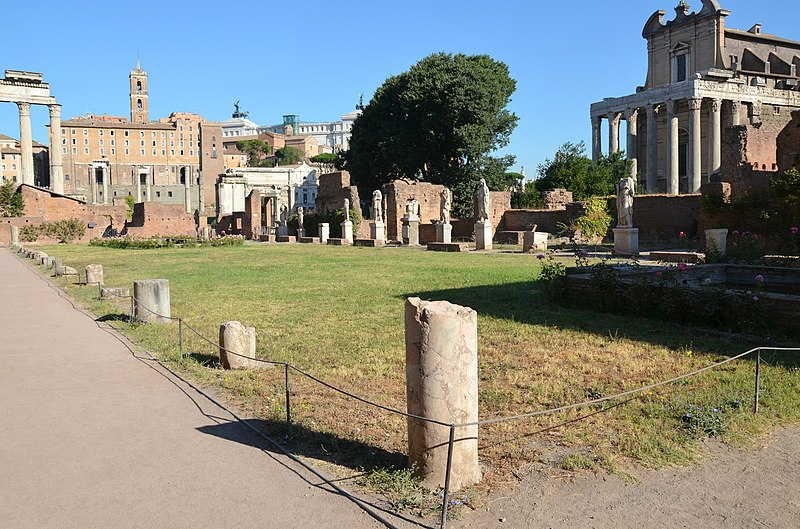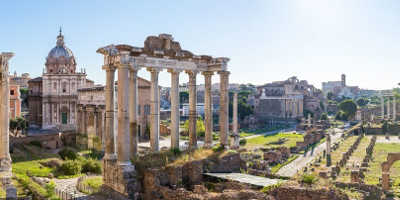House of the Vestals, Italy
The House of Vestal was the residence of the Vestal Virgins, the priestesses of the cult of Vesta.
The ruins of the perished complex remain within the Roman Forum today. Remaining artefacts, including statues and preserved building sections, have help archaeologists deduct the past lives of these women.
History of House of the Vestals
The Vestal Virgins originate from around 700 B.C. The King of Rome was informed that his kingdom would be protected by the Goddess Vesta, the virgin goddess of hearth, home, and family. But only if the magical fire was lit, never to go out, to honour her. The task of keeping this fire alight was left to a college of virgin women, later known as the Vestal Virgins. Subsequently, the House of Vestal, including the Temple of Vesta, was built, giving these women a dwelling to proceed with the cult’s happenings.
The Vestal Virgins
The Virgins of vestal were viewed as magical women to the Romans. They were said to be the only reason why Rome had not been doomed, due to their ongoing work to keep the magical flame alight. The college of vestals was an exclusive place, only accepting six virgins at a time who were each selected by the Emperor. The girls were between 6-10 years old and came from the most noble families of Rome. The women and girls committed to serving under the Dionysius of Halicarnassus for 30 years. The first ten years were to learn the ways of the college, with the next ten years performing the rituals of the house. Their duties included keeping the fire in the Temple of Vesta alight as well as keeping their vow of chastity, fetching water from a sacred spring, and preparing food. They finished their last ten years training the new recruits. They were the most powerful women in Rome, as they could vote, own property, and were free from their father’s control. Despite these perks, if you fell out of line, there were disastrous repercussions. Breaking their vows or not performing their duties would result in punishments such as whipping but breaking the vow of chastity was punished by being buried alive in the underground chambers.
Architecture
The complex is found within the Roman Forum, between the Regia and the Palatine Hill. The development of the complex grew throughout the thousand years the Vestals virgins remained. The first house was built at the foot of the Palatine Hill, containing the Temple of Vesta, as well as sleeping quarters, however, it was destroyed in 64 CE due to a fire. The House of Vestals was an important part of Roman culture, so it was rebuilt several times throughout the Empire. The construction of the new complex was completely reorganised, resulting in a much larger complex. The Roman style house was three-stories tall, with 50 rooms inside, much like a palace. The House had an elegant, elongated foyer as well as a double pool. Within the garden was built an elaborate fountain that cascaded into a large pool. Beautifully built, the House of Vestal had decorations including a statue of Numa Pompilius, who was the founder of the Vestal cult.
In the late 4th century AD, the introduction of compulsory Christianity caused the College of Vestals to end. The building was then used as a residence for officials of the imperial court. The building also appeared to have been used to keep money as hoards of coins were found at the site by archaeologists. In the 12th century, the site was abandoned and fell to ruins.
Art from the House of Vestals
Whilst much of the artwork and decorations from the house have been lost or destroyed over time, some of it has been carefully removed and taken to museums to ensure its preservation.
The House of Vestals contained many frescoes; beautiful pieces of artwork that were painted onto the walls. A yellow panel was discovered on the site containing a mythological scene of Narcissus with Eros and a red panel was found featuring the Winged Victory. These, along with other pieces, can now be viewed in the National Archaeological Museum in Naples.
The statues of the women at the site were not found placed upon the columns as you see today; they were re-erected after being found knocked-down. They are resemblances of previous Vestals and though they may not be placed on their correct bases, they are still an impressive sight and give you a suggestion of the appearance of the women and the place they held in society.
How do you see the House of the Vestals?
Visit these ruins during your visit to Rome! The House of the Vestal Virgins is situated to the east of the Roman forum behind the Temple of Vesta. You enter the house through the fauces – an entrance that normally leads through to an atrium. The walls of the fauces have some plasterwork remaining but all decorative elements have been lost over the centuries. The rooms either side of the fauces retain some decoration with their mosaic floors still visible. From here you enter the first atrium, a square room with a mosaic floor that hints at what the elaborately decorated house might have looked like in its prime. Sadly, the decorations around the rest of the site have been mostly lost but it is still an impressive sight to explore.
Wander through the remains and learn about the past lives of these incredible women. We suggest taking a guided tour as there are no signs pointing out what’s what. Listen to the local guides and discover the fascinating secrets and daily lives of the people at the House of Vestal.










